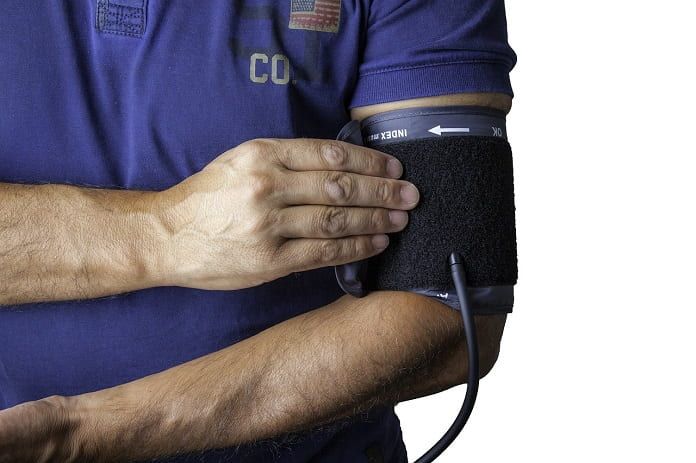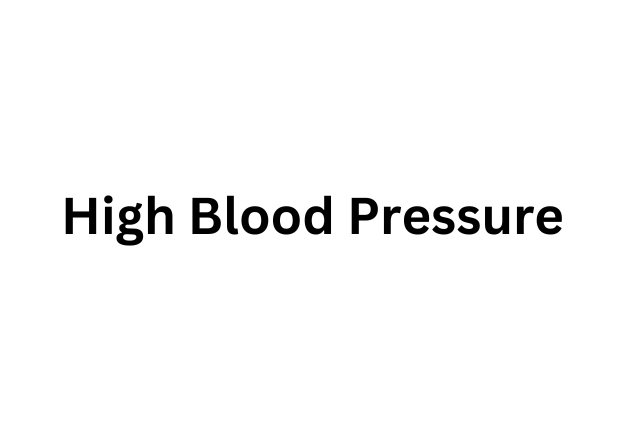What is High Blood Pressure?
High blood pressure, also known as hypertension, is one of the main risk factors for heart disease, stroke, and chronic kidney disease.
In the United States alone, more than 75 million people have high blood pressure, yet approximately 20% are unaware that they have this condition.
Blood pressure generally increases with age, and it is estimated that up to 75% of people over the age of 70 have high blood pressure.
High blood pressure tends to be more common in men under 65 years of age.
This then flips so that high blood pressure tends to be more common in women over 65 years old. High blood pressure also varies considerably between different racial groups.
Prevalence rates of high blood pressure tend to be higher in people of African descent, who generally develop high blood pressure earlier than other racial groups.
Symptoms
Blood pressure naturally fluctuates during the course of a day. Blood pressure tends to be highest in the morning and gradually decreases in the late afternoon.
Physical activity can also cause blood pressure to rise.
So how does medically diagnosed high blood pressure differ?
When blood pressure increases, your heart must work harder than usual to move blood around the body.
Usually, this is not a problem. It is when blood pressure is consistently elevated, even at rest, that problems start to occur. If this is left uncontrolled, high blood pressure can put your body at risk of developing chronic diseases.
High blood pressure is often called the “silent killer” as people are usually unaware that they have this condition.
Unfortunately, there are no early warning signs and high blood pressure is often left untreated for an extended period or until it becomes severe.
Many people only realize that they have high blood pressure when they start to experience potentially life-threatening health issues associated with organ damage.
The cardiovascular system, brain, kidneys, and eyes are most at risk.
The diseases associated with these organs that are commonly linked to high blood pressure are:
- Coronary heart disease including heart attacks and heart failure
- Stroke (particularly hemorrhagic), mini-strokes, and dementia
- Chronic kidney disease and renal failure
- Peripheral arterial disease (narrowing of the arteries)
- Retinopathy (damage to the retina that can eventually lead to blindness)
Stages of Disease
Blood pressure readings have two numbers.
The first is the systolic blood pressure. This measures the pressure the blood places on the arteries when the heart beats and pushes blood around the body.
The second number is the diastolic blood pressure, which measures the pressure in the arteries when the heart relaxes between beats.
Based on these readings, blood pressure for adults can be divided into the following risk categories:
- Normal Blood pressure, <120/<80
- Prehypertension, 120-139/80-89
- Stage 1 (mild hypertension), 140-159/90-99
- Stage 2, ≥160/≥100
Based on these risk categories, high blood pressure is diagnosed if the systolic blood pressure is greater than 140 mm Hg and the diastolic blood pressure is greater than 90 mm Hg.
Of course, there are some exceptions.
These thresholds change according to age. For example, infants and adolescents generally have lower blood pressure than adults.
Certain diseases can also affect these thresholds. People with diabetes are considered at risk if their blood pressure is above 130/80 mm Hg.
Types of High Blood Pressure
There are two types of high blood pressure: primary high blood pressure and secondary high blood pressure.
Primary High Blood Pressure
Primary high blood pressure accounts for 90-95% of high blood pressure cases.
No one knows what causes primary high blood pressure. Researchers believe that environmental, genetic, or even immune-related factors may play a role.
Primary high blood pressure develops gradually, so individuals usually do not experience any symptoms for a long period of time and are unaware that they have blood pressure issues.
Secondary High Blood Pressure
Secondary high blood pressure is caused by an underlying condition that can be identified.
Secondary high blood pressure often develops suddenly and can be more severe than primary high blood pressure.
Obstructive sleep apnoea, chronic kidney diseases, and certain adrenal gland disorders are examples of health issues that can cause secondary hypertension.
Secondary high blood pressure can even be caused by some medications, such as birth control pills, over-the-counter pain relief medications and decongestants, and illicit drugs.

Diagnosis
Healthcare professionals can diagnose high blood pressure simply by measuring your blood pressure using a sphygmomanometer.
This is an instrument consisting of an inflatable rubber cuff, which goes around your arm, connected to a device that can measure the pressure in your arteries.
Blood pressure should be measured two to three times, ideally at different appointments.
Healthcare professionals may also recommend a 24-hour monitor to measure blood pressure at home.
Once high blood pressure is diagnosed, other tests are done to try to identify the causes.
Healthcare professionals will take your medical history to work out if there is a family history of high blood pressure.
They will also ask about various lifestyle factors, such as smoking, alcohol, caffeine, stimulant drug use, high salt intake, and a lack of physical activity, which can all contribute to increased blood pressure.
Other laboratory tests are also performed to assess whether there is any organ damage and to identify other cardiovascular risk factors.
These include urine tests, blood tests, cholesterol measurements, renal ultrasonography, and ECG.
The test results also provide healthcare professionals with a baseline value to help them monitor the effectiveness of a given treatment.
Treatments
High blood pressure is a life-long disorder. The good news is that along with regular checkups, high blood pressure can be managed by making changes to your lifestyle and through medications.
Lifestyle modifications
High blood pressure can be controlled in most cases simply by making some lifestyle changes, as listed below:
- Eat a healthy well-balanced diet low in salt (less than 1 tsp each day) and fat.
- Aim to do moderate- to vigorous-intensity physical activity for at least 150 minutes per week.
- Don’t smoke
- Don’t use illicit drugs
- Limit alcohol consumption to two standard drinks per day. One standard drink is equivalent to a 12-oz (341 ml) bottle/can of 5% alcohol beer, a 1.5-oz (43 ml) shot of 40% hard liquor, or a 5-oz (142 ml) glass of 12% wine.
- Find a healthy way to manage stress
- Achieve and maintain a healthy body weight
Pharmacological interventions
Sometimes lifestyle modifications alone cannot sufficiently reduce blood pressure.
In these cases, several drug options are available to help treat and manage high blood pressure.
These include diuretics, beta-blockers, angiotensin-converting enzyme (ACE) inhibitors, angiotensin II receptor blockers, and calcium channel blockers.
Some individuals will respond to one treatment better than another. Others may need a combination of medicines.
It may take some time to find an effective treatment, but once found, these interventions will prevent most complications and prolong life.
Prevention
Blood pressure can be maintained at healthy levels by adopting the healthy lifestyle choices outlined above.
It is recommended that you get your blood pressure checked at least once every year by your healthcare provider.
Relevant topics that may be of interest to you:
- Can blood pressure medications treat mental illnesses?
- Six natural ways to lower blood pressure
- Can high blood pressure cause brain damage?
- How to live healthily and reduce high blood pressure
- Why measure blood pressure in both arms?
- Spices and herbs not only add flavor to dishes but may also help reduce blood pressure, a study says
- How common is high blood pressure in children?
- What is the Relationship between Alcohol and Blood Pressure?
References
- Bakris, GL. Merck Manual: Overview of Hypertension. Retrieved from https://www.merckmanuals.com/en-ca/professional/cardiovascular-disorders/hypertension/overview-of-hypertension. Accessed 13 August 2018.
- Blood pressure. Retrieved from https://www.heartfoundation.org.au/your-heart/know-your-risks/blood-pressure. Accessed 13 August 2018.
- Blood pressure: Does it have a daily pattern? Retrieved from https://www.mayoclinic.org/diseases-conditions/high-blood-pressure/expert-answers/blood-pressure/faq-20058115. Accessed 13 August 2018.
- Chobanian AV, et al. Seventh report of the Joint National Committee on Prevention, Detection, Evaluation, and Treatment of High Blood Pressure. Hypertension. 2003; 42:1206-1252.
- Effective ways for reducing high blood pressure. Retrieved from https://www.canada.ca/en/public-health/services/chronic-diseases/cardiovascular-disease/effective-ways-reducing-high-blood-pressure.html. Accessed 14 August 2018.
- High blood pressure. Retrieved from http://www.heartandstroke.ca/heart/risk-and-prevention/condition-risk-factors/high-blood-pressure. Accessed 13 August 2018.
- High blood pressure (hypertension). Retrieved from https://www.mayoclinic.org/diseases-conditions/high-blood-pressure/symptoms-causes/syc-20373410. Accessed 13 August 2018.
- Hypertension. Retrieved from https://www.canada.ca/en/public-health/services/chronic-diseases/cardiovascular-disease/hypertension.html. Accessed 13 August 2018.
- Hypertension. Retrieved from https://emedicine.medscape.com/article/241381-overview. Accessed 13 August 2018.
- What’s a standard drink. Retrieved from https://www.rethinkyourdrinking.ca/what-is-a-standard-drink/. Accessed 14 August 2018.



